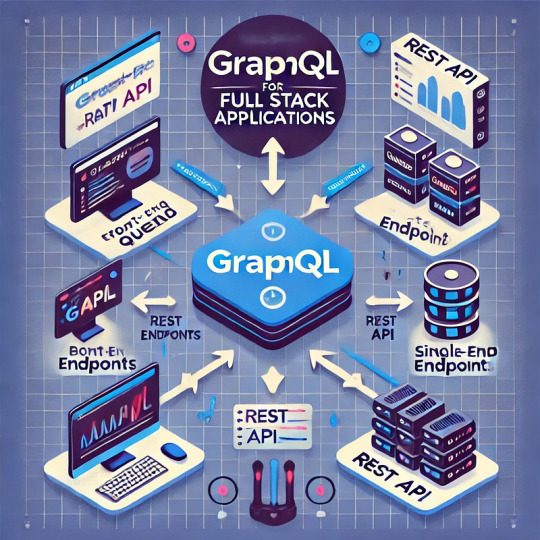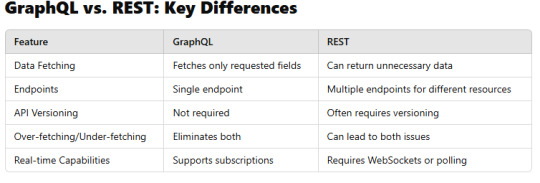#GraphQLMutations
Explore tagged Tumblr posts
Text
In modern web development, efficient data fetching is crucial for providing a smooth and responsive user experience. Traditional REST APIs can sometimes lead to over-fetching or under-fetching of data, causing unnecessary network calls or missing critical information. GraphQL, an API query language developed by Facebook, solves this problem by allowing clients to request exactly the data they need. In this guide, we’ll walk you through the steps of integrating Angular 19 with GraphQL for efficient data fetching, making your application more performant and responsive.
#Angular19#GraphQL#DataFetching#Angular#WebDevelopment#FrontendDevelopment#GraphQLIntegration#APIIntegration#AngularDevelopment#WebAppDevelopment#SPA#RESTAPI#ApolloClient#GraphQLQueries#AngularComponents#GraphQLServer#DataManagement#AngularServices#EfficientDataFetching#GraphQLMutations#GraphQLSubscriptions#FrontendArchitecture#AngularApp#JavaScriptFrameworks#FrontendTech#ApolloAngular#AngularGraphQL
0 notes
Text
Introduction to GraphQL for Full Stack Applications

What is GraphQL?
GraphQL is a query language for APIs and a runtime for executing those queries by leveraging a type system defined for the data. Developed by Facebook in 2012 and open-sourced in 2015, GraphQL provides a flexible and efficient alternative to REST APIs by allowing clients to request exactly the data they need — nothing more, nothing less.
Why Use GraphQL for Full Stack Applications?
Traditional REST APIs often come with challenges such as over-fetching, under-fetching, and versioning complexities. GraphQL solves these issues by offering:
Flexible Queries: Clients can specify exactly what data they need.
Single Endpoint: Unlike REST, which may require multiple endpoints, GraphQL exposes a single endpoint for all queries.
Strongly Typed Schema: Ensures clear data structure and validation.
Efficient Data Fetching: Reduces network overhead by retrieving only necessary fields.
Easier API Evolution: No need for versioning — new fields can be added without breaking existing queries.
GraphQL vs. REST: Key Differences

Core Concepts of GraphQL
1. Schema & Types
GraphQL APIs are built on schemas that define the data structure.
Example schema:graphqltype User { id: ID! name: String! email: String! }type Query { getUser(id: ID!): User }
2. Queries
Clients use queries to request specific data.graphqlquery { getUser(id: "123") { name email } }
3. Mutations
Used to modify data (Create, Update, Delete).graphqlmutation { createUser(name: "John Doe", email: "[email protected]") { id name } }
4. Subscriptions
Enable real-time updates using Web Sockets.graphqlsubscription { newUser { id name } }
Setting Up GraphQL in a Full Stack Application
Backend: Implementing GraphQL with Node.js and Express
GraphQL servers can be built using Apollo Server, Express-GraphQL, or other libraries.
Example setup with Apollo Server:javascriptimport { ApolloServer, gql } from "apollo-server"; const typeDefs = gql` type Query { hello: String } `;const resolvers = { Query: { hello: () => "Hello, GraphQL!", }, };const server = new ApolloServer({ typeDefs, resolvers });server.listen().then(({ url }) => { console.log(`Server running at ${url}`); });
Frontend: Querying GraphQL with React and Apollo Client
Example React component using Apollo Client:javascriptimport { useQuery, gql } from "@apollo/client";const GET_USER = gql` query { getUser(id: "123") { name email } } `;function User() { const { loading, error, data } = useQuery(GET_USER); if (loading) return <p>Loading...</p>; if (error) return <p>Error: {error.message}</p>; return <div>{data.getUser.name} - {data.getUser.email}</div>; }
GraphQL Best Practices for Full Stack Development
Use Batching and Caching: Tools like Apollo Client optimize performance.
Secure the API: Implement authentication and authorization.
Optimize Resolvers: Use DataLoader to prevent N+1 query problems.
Enable Rate Limiting: Prevent abuse and excessive API calls.
Conclusion
GraphQL provides a powerful and efficient way to manage data fetching in full-stack applications. By using GraphQL, developers can optimize API performance, reduce unnecessary data transfer, and create a more flexible architecture.
Whether you’re working with React, Angular, Vue, or any backend framework, GraphQL offers a modern alternative to traditional REST APIs.
WEBSITE: https://www.ficusoft.in/full-stack-developer-course-in-chennai/
0 notes